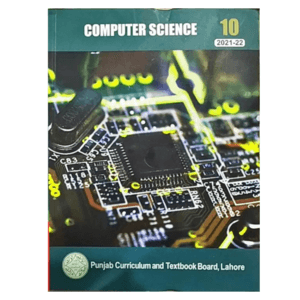Computer 10th Class Book Pdf Download
The 10th class computer science book is a crucial resource for students aiming to develop a solid foundation in computer science. Here's a detailed overview of what the book generally includes:
See Also: Past Paper of 9th class 2023
The 10th class computer science book is a crucial resource for students aiming to develop a solid foundation in computer science. Here's a detailed overview of what the book generally includes:
1. Introduction to Computers:
- Computer Basics: Explains what a computer is, the types of computers, and the history of computing.
- Components of a Computer System: Covers hardware components like the CPU, memory, storage devices, and input/output devices.
- Software Overview: Differentiates between system software (like operating systems) and application software (such as word processors and spreadsheets).
See Also: Past Paper of 9th class 2023
2. Data Representation:
- Binary System: Explains how computers use binary (0s and 1s) to represent data.
- Number Systems: Introduces binary, decimal, octal, and hexadecimal number systems and how to convert between them.
- Data Storage: Discusses how data is stored in computers, including bits, bytes, and various storage units.
3. Programming Basics:
- Introduction to Programming: Provides an overview of what programming is and its importance in automating tasks.
- Programming Languages: Introduces students to programming languages like C++ or Python, depending on the curriculum.
- Basic Syntax and Structure: Covers the basic structure of a program, including variables, data types, and simple operations.
- Control Structures: Teaches how to use loops (for, while) and conditional statements (if, else) to control the flow of a program.
See Also: Past Paper of 9th class 2023
4. Algorithm and Flowcharts:
- Problem Solving: Focuses on the steps involved in solving problems using algorithms.
- Flowcharts: Introduces the use of flowcharts to visually represent algorithms and how they can simplify understanding complex logic.
5. Introduction to Databases:
- Database Concepts: Covers basic database concepts, including what a database is, types of databases, and the role of databases in managing data.
- SQL Basics: Introduces SQL (Structured Query Language) for creating, reading, updating, and deleting data in databases.
6. Internet and Web Technologies:
- Internet Fundamentals: Explains the structure and functioning of the internet, including concepts like IP addresses, DNS, and protocols.
- Web Development Basics: Introduces basic HTML and CSS, enabling students to create simple web pages.
- Cybersecurity: Discusses the importance of online safety, common threats like viruses and hacking, and best practices for protecting personal information.
See Also: Past Paper of 9th class 2023
7. Computer Networks:
- Networking Basics: Covers types of networks (LAN, WAN), networking devices (routers, switches), and how computers communicate over a network.
- Data Transmission: Explains how data is transmitted over a network, including wired and wireless methods.
8. Practical Applications:
- Hands-On Projects: Encourages students to apply what they’ve learned by creating small programs, simple databases, or basic web pages.
- Real-World Scenarios: Provides examples of how computers and programming are used in various fields, such as healthcare, education, and business.
9. Ethical and Social Issues:
- Digital Ethics: Discusses the ethical use of technology, including issues like privacy, digital rights, and the impact of social media.
- Impact of Computers on Society: Examines how computers have transformed various aspects of life and the potential future developments in the field.
See Also: Past Paper of 9th class 2023
10. Revision and Exercises:
- Summary Sections: Each chapter typically ends with a summary of key points to reinforce learning.
- Exercises: Includes questions, problems, and practical exercises to test students' understanding and prepare them for exams.
This book not only provides theoretical knowledge but also encourages practical application through exercises and projects. It is structured to help students prepare for exams and lay the groundwork for more advanced studies in computer science.

